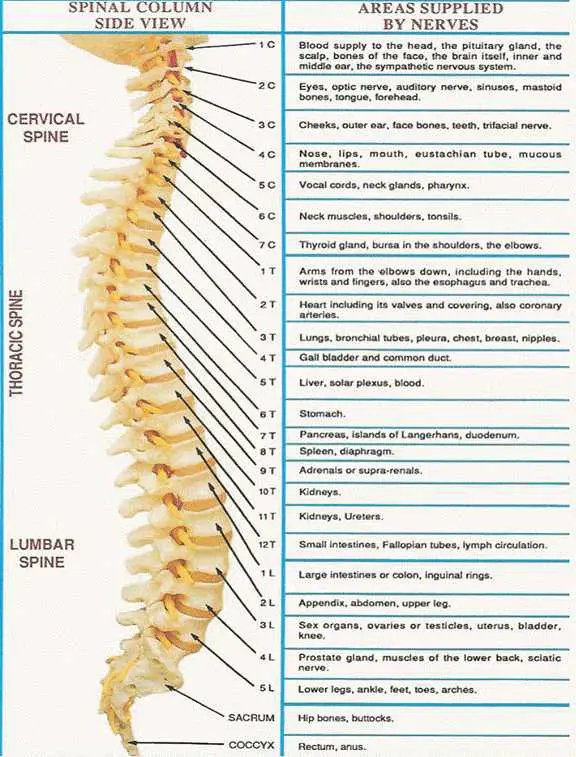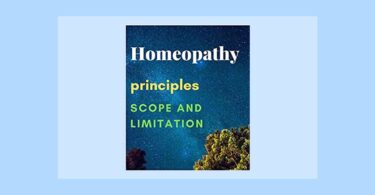In a previous article*, I wrote about the possible actions one can take when the remedy doesn’t seem to work. I stated that the simillimum is a combination of the right remedy, the right potency and the right dose. Knowing this, we should be aware that when the correctly chosen remedy doesn’t, we first have to check and possibly correct the potency and/or dose. The big mistake is that we jump too quickly to another remedy. Once you have changed your remedy, you will never return to it, since you’re convinced it did not work.
Another reason the remedy may not work, is that the power of the homeopathically chosen remedy might be blocked on a physical level. Our dynamised remedies give an impulse to the body to react, and thus to cure its own diseases. To do so, the body has to be disposed of the necessary power. This power or energy, can only be there, if there is a free flow of body fluids and nerve impulses.
Dislocated vertebrae are able to cause disturbed energy flow. Since all of our nerve system passes through the spinal cord, it is obvious that we cannot permit any obstruction on that level. In my experience, the assistance of an osteopathic practitioner can be of great value. Below is a chart indicating the relationship of points on the spine to various organs and regions of the body.

It’s clear that the anamnesis won’t tell you if there are any obstructions on the physical level, so you might need other diagnostic tools. One way handling this, is to have your patient systematically screened by an osteopathic practitioner. This will avoids losing valuable time. The osteopath will normally check the entire body structure and organs and look for obstructions, whether they are caused by dislocated vertebrae or by fascial tension around internal organs.
Another method, which I use frequently, is doing a reflexology treatment during the case taking, using the reflex points on the feet. The advantage of this method, is that you get a complete image of the entire body and in the meantime you have the time to make an anamnesis of your patient. The tenderness of the reflex points will tell you which organ or system is not in balance. You will also be able to tell on which vertebral level there are obstructions. All this information can indirectly assist in finding the correct remedy. If you feel a tender ‘liver point’ on the right foot, you can take this into consideration and keep the well-known liver remedies in mind. Asking your patient about this, he might describe some very interesting digestive problems he suffers from. Asking further about the modalities of this digestive problem might reveal, for instance, some emotional etiology.
During this reflexology treatment, which takes about an hour, one can gather a lot of information. Again, if you find problems on the vertebral level, don’t hesitate to direct your patient to an osteopathic practitioner.
Case 1:
J., female, 45 years old.
Chief complaints: dysmenorrhea, bearing-down pains, extremely tired, nausea, painful finger joints, etc.
I knew from past consultations that Sepia had been helpful for her several times before. Since her symptoms seemed to fit this remedy again. Sepia 30 followed by 200 benfitted, but for a short time.
I performed a reflexology treatment. The sensitive points related to vertebrae on the lumbosacral level, an area associated with the uterus. The lady was treated by an osteopathic practitioner who, indeed, found some dislocated vertebrae in the mentioned zone; these caused neural hyperactivity towards the uterus with cramping pains as a result.
After the osteopathic treatment, the lady received Sepia 200 two more times and all her complaints disappeared.
Case 2:
F., male, 51 years old.
Chief complaints: Attacks of anger, pain in the chest, perspiration, paleness, fear of dying.
I advised him to have a complete check-up at the hospital. Although his symptoms suggested heart problems, they couldn’t find anything wrong and gave him nitro-pills ‘just in case’. I invited him to receive a reflexology treatment. The reflex points showed very sensitive vertebrae on the high-dorsal level (here the nerves to the heart pass in- between the vertebrae). I didn’t advice any homeopathic remedy at this time, but directed him to an osteopathic practitioner. The dislocated vertebrae were corrected and all his complaints disappeared. He did not need homeopathic intervention.
Case 3:
N., female, 35 years old.
Chief complaints: Terrible pains left side of the face, extending to the inside of the left ear, TMJ very painful < touch, opening mouth.
She was treated twice by her dentist but since then everything seemed to be OK. The dentist suggested she see a stomatologist. She chose to try homeopathy first.
Spigelia 200 improved her complaints very quickly but only for a short time. A second prescription (1M) had the same result. I did a reflexology treatment which revealed some problems in the cervical zone and advised her to see an osteopathic practitioner. After the osteopathic treatment, she took a dose of Spigelia 1 M. The improvement was immediate and definitive.
For me it is clear that homeopathy as well as osteopathy should be the first-line treatments. The results get even better when we combine the two methods.
Although you can’t consider reflexology a real ‘diagnostic’ method, it turns out to be a very helpful tool to find the problem zones in the body.
* https://hpathy.com/organon-philosophy/the-importance-of-potency-choice-dilution-and-dose/







The migraine represent an affection due to local disturbances that appear as result of the Dura Mater distension at yhe level of the cephalic extremity.
I.Patients with breast benign tumours .
In women with benign breast tumours the main energetic disturbances is the stagnation of the hepatic Qi. The perturbation of Qi and Blood will generate the obstruction of the channels with Liver Yang ascension violent ,unilateral cephalalgia ,irascibility ,vertigo .This disturbances is agraveted by feelings such as: anxiety,sadness, that will internally harm the liver and will disturb the Hun .
The harmed Hun leads to a Jing loss that may result in the appearance of the maniaco- depresive psychosis.